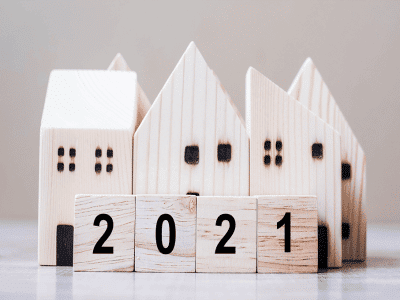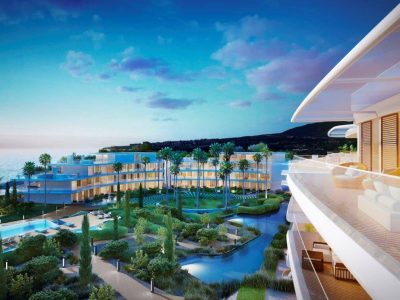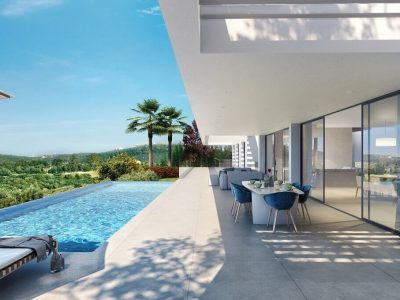
Buying a new home is not just a transaction—it’s a journey, a milestone, and often, a dream come true. But let’s face it: it can also be overwhelming. Especially in Spain, where bureaucracy, contracts, and cultural nuances may be unfamiliar, particularly for international buyers.
Over the years working in the real estate industry in southern Spain, I’ve seen every scenario you can imagine—from the dream deals to the ones that almost got away. That’s why I’ve compiled these 10 insider tips based on my real-world experience helping buyers find their slice of paradise on the Costa del Sol. Whether you’re eyeing a holiday apartment, a golfside villa, or a new development in Estepona, this guide is for you.
1. Why Smart Planning Is the Key to a Successful Property Purchase
Before you fall in love with a sea-view penthouse or start comparing marble finishes, take a breath. Planning is the foundation of every successful property purchase.
Buying a new home shouldn’t be complicated—but it can be if you jump in blind. My mission has always been to ensure the entire process is positive, straightforward, and stress-free. It all begins with a clear conversation: What do you want from your new home? Investment, lifestyle, retirement haven? That clarity will shape every decision that follows.
2. Set Your Budget and Choose the Right Location
Your budget doesn’t just define how much you can spend—it also defines what’s realistic. And in Spain, understanding what’s included in the price is just as important as the number itself.
One of the first things I explain to clients is that prices on listings often don’t include taxes, legal fees, or additional costs. As a general rule, budget around 10–13% more than the advertised price to cover everything.
Once your budget is defined, it’s time to zero in on location. For example, modern properties in Estepona are gaining traction for their balance of luxury, affordability, and lifestyle. The area offers beachside living, world-class golf, and growing investment potential—all essential factors for long-term value.
3. Researching the Developer and Their Track Record
New developments may look beautiful in brochures, but it’s what lies beneath that really counts. That’s why vetting the developer is a non-negotiable step in buying a new-build home.
During my career, I’ve worked with global property developers and also seen buyers suffer because they didn’t ask the right questions. You want a developer with a proven track record, solid financial backing, and transparency throughout the building process.
Ask for:
-
Previous completed projects.
-
Delivery timelines—and whether they’ve been met.
-
Builder warranties and snagging policies.
I’ve built a network of trusted professionals in the region because, quite simply, your peace of mind is my priority.
4. Legal Essentials: Licenses, Lawyers, and Bank Guarantees
Legal matters can often feel like a maze—especially for international buyers unfamiliar with Spain’s property system. Understanding licenses, verifying documentation, and ensuring the developer’s legal compliance are absolutely essential steps.
I strongly recommend hiring an independent, English-speaking lawyer who specializes in new builds and off-plan purchases in Spain. A good lawyer will help you verify:
-
Urban planning permissions and zoning compliance.
-
The Licencia de Primera Ocupación (First Occupancy License).
-
The existence of bank guarantees to secure your stage payments.
Transparency is non-negotiable. I always encourage clients to ensure every commitment is documented clearly, so there are no hidden clauses or legal surprises later on.
5. Financing Your New Home: What You Need to Know
If you’re not paying in cash, understanding how financing works in Spain is crucial. Local banks do offer mortgages to non-residents, though the conditions can vary depending on your situation.
Typically:
-
Non-residents can access financing of up to 60–70% of the property price.
-
Your income, existing debts, and residency status will affect your eligibility.
-
Always compare interest rates, fixed vs. variable terms, and any early repayment fees.
It’s also important to understand how payments are structured—especially for off-plan properties, where installments are made over time. Planning your budget around these stages is key to a smooth experience.
While I don’t offer financial services directly, I always advise my clients to explore mortgage options early and to consult trusted financial professionals who understand the market.
6. Understanding the Contract: No Small Print Surprises
Contracts can be intimidating—especially when written in legal Spanish. But they don’t have to be confusing.
Every client I work with receives a plain-language breakdown of the contract, including payment schedules, penalties, warranties, and clauses on delays or changes. This is where transparency really matters.
One thing I emphasize is ensuring the contract matches what was promised—from finishes and materials to delivery dates. If it’s not in writing, it doesn’t exist legally.
7. Home Inspection and the Importance of a Snagging List
Even brand-new homes can have defects. That’s why the snagging process is critical.
A snagging list is a detailed inspection of the property before final handover. I often accompany my clients during this inspection and coordinate with local experts when necessary. What we look for:
-
Finishing quality (paint, tiles, floors).
-
Functionality (plumbing, lighting, windows).
-
Extras promised (appliances, fixtures).
I never leave clients alone during this phase—it’s too important. A good snagging process can prevent months of frustration later.
8. Negotiation Tactics: Getting the Best Value
Many buyers think there’s no room for negotiation in new builds. But that’s not always true.
Over the years, I’ve successfully negotiated on behalf of my clients for:
-
Free furniture packs.
-
Parking and storage units included.
-
Minor price reductions or flexible payment schedules.
It’s not about being pushy—it’s about understanding the market and the developer’s position. My years working both locally and with major developers taught me how to identify leverage points. My goal? Maximum value, minimum stress.
9. After the Signing: Taxes, Licenses, and Other Costs
Once you’ve signed and celebrated, the practicalities begin. Many first-time buyers forget the post-sale costs involved.
I make sure every client knows what to expect:
-
VAT (IVA) of 10% for new builds.
-
Stamp duty (AJD), notary, and registry fees (approx. 1.5%–2%).
-
Community fees and annual property tax (IBI).
My service provides ongoing support for setting up utilities, registering for local services, and even furnishing and decorating. I believe service shouldn’t stop at the notary’s office.
10. Final Steps: Moving In and Post-Sale Guarantees
Moving day should feel like a celebration—not a series of headaches.
From arranging key handover and final walkthroughs to coordinating deliveries and helping you settle into your new community, I’m there to ensure everything goes smoothly.
Equally important is knowing your rights:
-
You’re covered by a 10-year structural warranty, and shorter warranties for finishes and installations.
-
Report any defects within the legal timeframes.
-
Don’t hesitate to reach out—I always tell my clients, “You can count on me any time of the day, seven days a week.”
Final Thoughts
Buying a new home in Spain doesn’t need to be complicated or stressful—not when you have the right guidance. For me, helping people find a place they truly love has become more than a profession. It’s a lifestyle and a passion.
As I always say: “To find a home that will move you.”
Whether you’re starting your search or ready to reserve your dream apartment, remember that knowledge is power—and experience is priceless. Let’s make this journey simple, joyful, and absolutely unforgettable.




